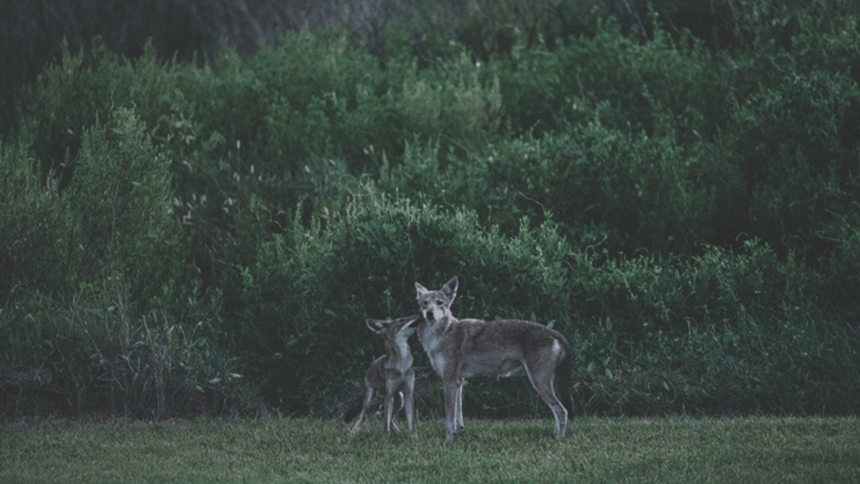A Mississippi State University researcher is studying a distinct population of coyotes along the Gulf Coast in hopes of furthering conservation of the disappearing species of red wolves.
Dana Morin, assistant professor in the Department of Wildlife, Fisheries and Aquaculture and scientist in the university’s Forest and Wildlife Research Center, is partnering on a $2.1 million grant from the U.S. National Science Foundation and the Paul G. Allen Family Foundation to study red wolf ancestry among wild canines along the Gulf Coast.

Her partners include Bridgett M. von Holdt from Princeton University, Kristin E. Brzeski from Michigan Technological University and researchers from the Endangered Wolf Center. Gulf Coast canids are coyotes found in eastern Texas and western Louisiana that carry varying amounts of red wolf ghost ancestry in their coyote genomes.
Past hybridization among closely related species, such as red wolves and coyotes, can leave traces of genetic variation from extinct or endangered species in the DNA of present-day animals. This phenomenon, known as ghost introgression, is an often-overlooked reservoir of preserved genetic variation.
Morin and her collaborators believe these hidden reservoirs could be essential for conserving adaptive potential in the future and even reversing extinctions. The team will directly study the canids’ ecology and population dynamics using GPS telemetry, develop a noninvasive genetic tool for widespread surveys, and assess the ecological conditions that promote the persistence of red wolf ghost ancestry.
They will use genomic tools to identify individuals of high conservation value, as measured by their degree of distinct red wolf ghost ancestry, which have the greatest potential to resuscitate endangered red wolf ghost genetic variation.
“Our goal is to better understand how ghost introgression persists on the landscape and develop tools that can serve as a model for leveraging ghost introgression to preserve the genomes of species facing the immediate threat of extinction,” Morin said. “I am excited to be part of this team, re-envisioning the conservation value of ghost introgression.”
This research is one of 10 projects receiving funding under the Partnership to Advance Conservation Science and Practice program, a first-of-its-kind collaboration between the NSF and the Allen Foundation. The projects focus on a range of species, and the outcomes will have far-reaching implications for biodiversity and conservation, policy, and the economy.







